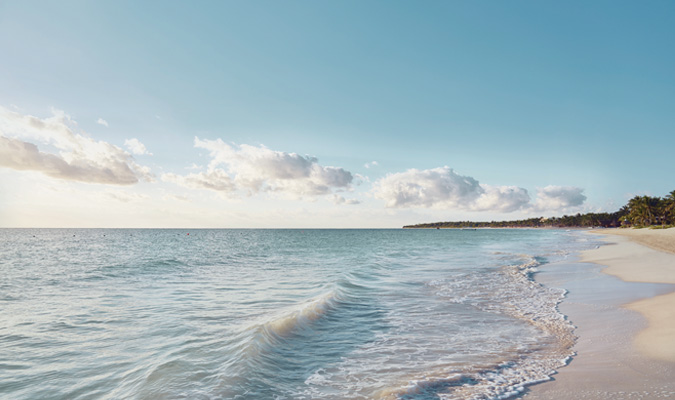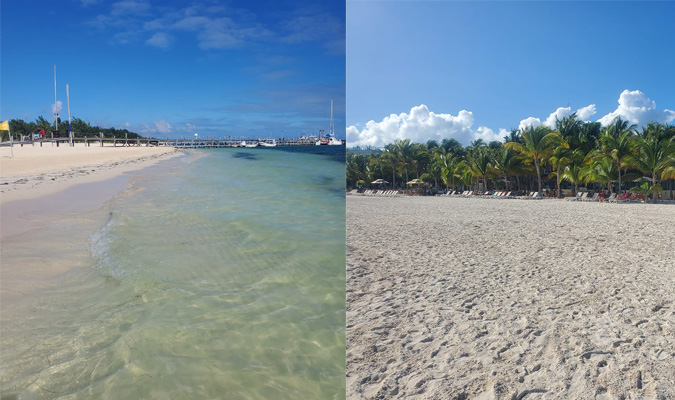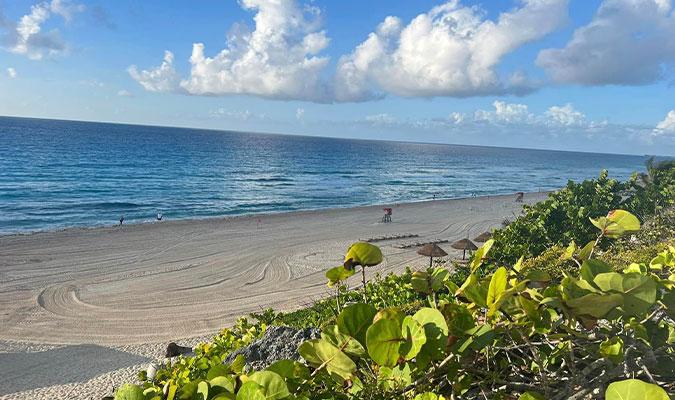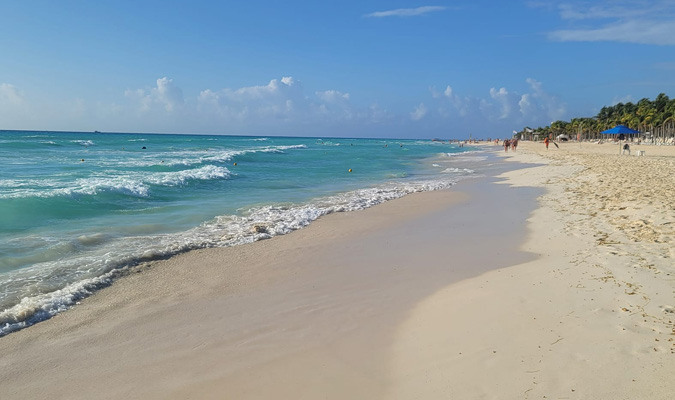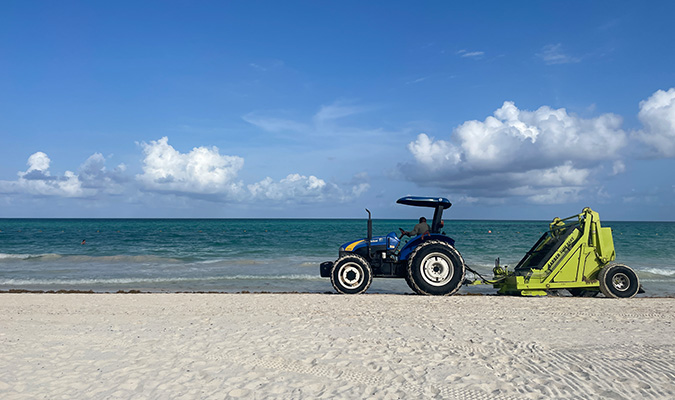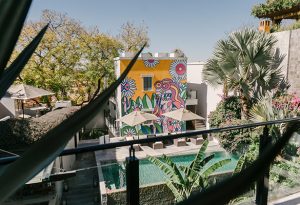The continued presence of sargassum seaweed (a.k.a sargasso, sargazo) on the beaches of Mexico continues to be a concern to many travelers. For those wondering what their experience will be like on their upcoming vacation, we invite you to read more about the problem and how local authorities, hotels, and students are handling the situation.
Overview on Sargassum in Riviera Maya, Cancun, and Tulum
Historically, the seaweed typically starts at the beginning of spring due to a rise in sea temperature, which accelerates the reproduction of the seaweed. As the days get warmer, the presence of sargassum is expected to increase.
Generally, beaches with the highest seaweed count include Playa del Carmen, Tulum, Siaan Kaan, and some points between Cancun and Puerto Morelos, however, predicting which beach the sargassum seaweed will impact and in what quantities is nearly impossible as conditions change almost daily and typically without much warning. The overarching consensus from specialists is that this natural phenomenon poses no ecological threat or health concerns. That said, when it accumulates on the beach the experience may be quite different than expected, often limiting access to the beach and sea accompanied by an unpleasant odor. The seaweed can range from low to high quantities depending on tide, wind, and other factors.
Over the past years, the Mexican government and hotels along the coast have stepped up their efforts to tackle it, however, the majority of low-budget hotels and hostels do not have the means to clean their beaches on a daily basis.
If you’re keen to avoid sargassum on your Mexico visit, make sure to stay in a hotel that has staff constantly monitoring the ever-changing situation and has the means to tackle the issue.
Plan your vacation with Journey Mexico and we can help you find a hotel that has the means and resources to clean their beaches every day and keep your vacation as sargassum-free as possible.
Read on to discover the latest news on sargassum…
Read more: 5 Mexican Beach Destinations Without Sargassum
Latest news on sargassum seaweed 2024
In 2023, sargassum seaweed made its appearance in February, marking an earlier arrival compared to previous years, and experts are forecasting a similar trend for 2024. According to Mexico News Daily, there is currently a mass of sargassum in the Atlantic Ocean that could bring increased levels of seaweed to Mexico and Central America this year. While it may shift as weather patterns are becoming more unpredictable these days due to climate change, the current forecast is that increased seaweed will make it’s way to Mexico by April or May. Since the arrival of increased sargassum nearly a decade ago, various measures and tactics have been put in place to help combat the problem. Currently, Holbox, Isla Contoy, Costa Mujeres, Isla Mujeres and Chetumal are reported to be seaweed-free (January 2024).
Earlier last year, Tulum announced their “Tulum Against Sargassum” plan which will work to stop the seaweed from reaching the region’s beaches by diverting it at sea. Recently, Tulum acquired several anti-sargassum vessels and additional equipment to supplement the existing fleet in the region, which employs sargassum-catching dragnets to prevent the seaweed from reaching the shore. Read more.
Beach pictures from hotels in the Mexican Caribbean
Updated July 2023: As part of our on-going efforts to monitor the sargassum seaweed situation, we are in regular contact with our hotels in the affected areas.
Below are some images from the Riviera Maya and Isla Holbox:
What action are the hotels taking?
Paradisus Playa del Carmen: When sargassum is present on the beach, the hotel manually cleans the seaweed throughout the day.
Andaz Mayakoba: When sargassum presents, the resort sends a boat out to fish the seaweed out of deep waters and a team of 20 people manually cleans the beaches daily.
Jashita: In the case of sargassum, the hotel has a team of people that manually clean the beach throughout the day.
Banyan Tree Mayakoba: When the seaweed appears, the resort´s staff clean the beach daily. Depending on the volume of sargassum, this may be done manually or using machinery.
Chable Maroma: The hotel carries out daily cleaning when necessary, employing a tractor and team of staff from 7am to 3pm.
Sargassum Seaweed Map
Check out the Sargassum seaweed map below to see which parts of Mexico have been affected. Last updated January 26, 2024
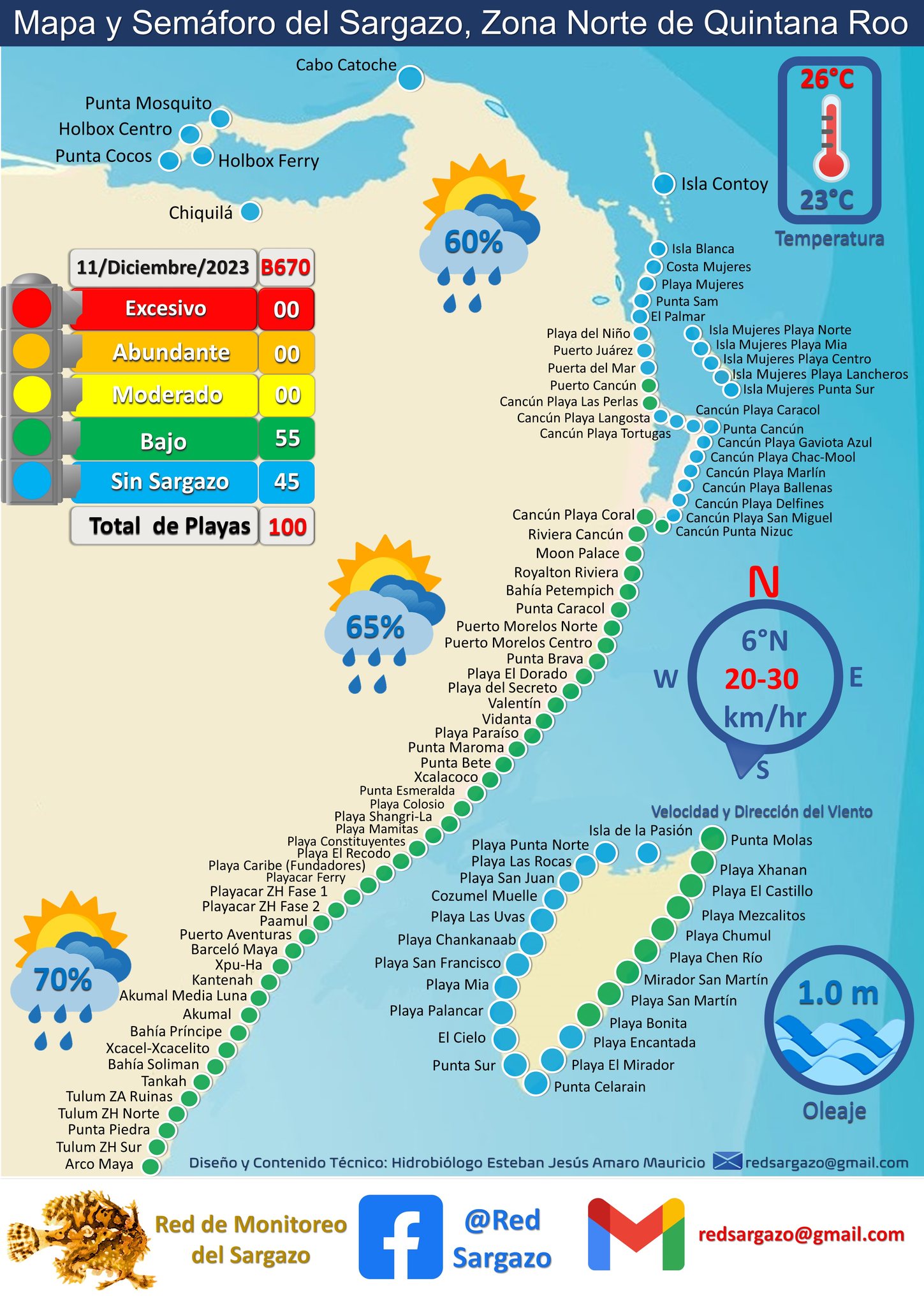
Everything you need to know about sargassum
What is sargassum?
Sargassum is a brown seaweed with buoyant, oxygen-filled bladders that keep it floating on the surface of the water. It can clump together in huge masses, often miles long, and has been known to wash up on the shores of beaches along the Caribbean coast from the United States all the way to Argentina.
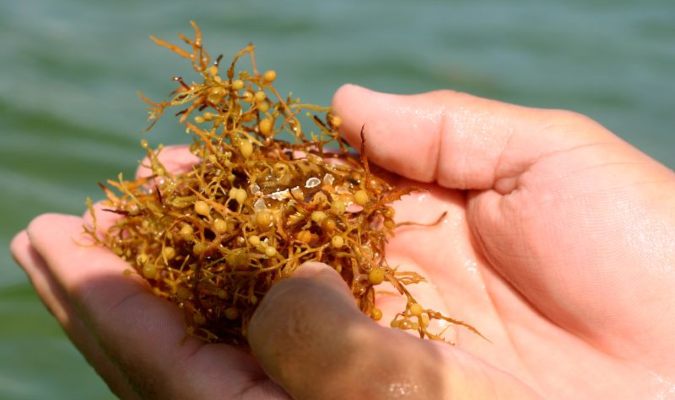
Credit: Clinton & Charles Roberts
As reported in our post “Mexico and Mother Nature – What you Need to Know 2015“, the sargassum occurrence — which has many ecological benefits — is not dangerous nor continuous and often unpredictable. One week there may be large mounds of seaweed heaped on the beaches and obscuring the translucent sea, while others the beaches are perfectly clean.
Many hotels are taking measures to provide clear beach access through clearing the seaweed and removing it from the beach, while others are unable or unwilling to do so due to a lack of human and financial resources, an unwillingness to alter naturally occurring patterns or long-term concerns that the seaweed will actually protect and enhance their beaches.
The seaweed accumulation has been most prolific on stretches of exposed beach and less noticeable in areas that are protected by natural headlands, bays, or coves. Read more: What You Need to Know about Sargassum Invading the Caribbean.
Where is it coming from?
To find out exactly where sargassum is coming from and how it ends up on Mexico’s coast, we spoke to Florida Atlantic University’s Dr Brian Lapointe, a research professor and leading expert on sargassum.
He told us that, after studying satellite imagery, it’s understood there is a large amount of seaweed growing between the coast of Africa and Brazil, an area they have coined the Great Atlantic Sargassum Belt.
In that region, there is a range of nutrient sources that are feeding the sargassum and helping it to bloom. These include nutrient-rich run-off from the Amazon River and the Orinoco. There is also a phenomenon known as upwelling, in which nutritious seawater rises from the bottom to the top of the ocean, which helps to feed the floating plant.
Dr Lapointe also pointed out that he has seen areas of low temperature off the coast of Africa, which could indicate nitrogen is coming from the deep seas. Other sources of nutrients include Saharan dust coming from Africa.
The seaweed is moved from the Great Atlantic Sargassum Belt to Mexico and the Caribbean region by hitching a ride on currents. As it makes it way along these streams, the sargassum picks up more and more nutrients and continues to grow.
Sargassum seaweed facts
- Floating sargassum rafts provide a wonderful natural habitat for many sea creatures. According to the National Oceanic and Atmospheric Administration, fish, sea turtles, marine birds, crabs, shrimp, and more all call this floating island home.
- There are more than 300 different species of sargassum including sargassium muticum (more commonly known as Japanese wireweed), and sargassum horneri (also known as devil weed).
- The Sargasso Sea is the only sea in the world without a land bordering it and, as you might expect, is home to large swathes of floating sargassum seaweed. The sea itself was reportedly discovered by explorer Christopher Columbus and his crew who crossed it in 1492.
- In 2018, Quintana Roo businessman Omar Vázquez Sánchez made good use of the local sargassum build-up when he built an earthquake- and hurricane-resistant home from a mixture of sargassum and adobe.
START PLANNING YOUR VISIT
Worried sargassum might put a damper on your vacation? Get in touch with one of our Mexico-expert travel planners to talk through sargassum-free beach destinations or unique experiences and cultural exchanges outside of the hotel (and away from the beach!)
Sargassum-free ideas when traveling to the Riviera Maya include swimming with whale sharks, visiting a cenote, exploring Mayan archeological sites, discovering a Pueblo Magico, and more!
Originally Posted: August 2015
Post last updated: January 2024

